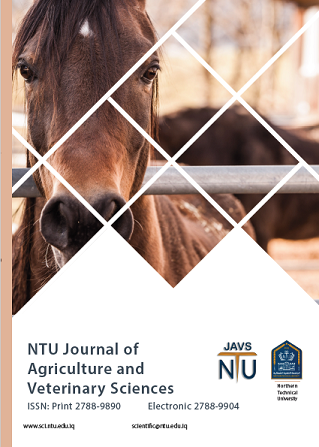Abstract
This study was conducted to determine the prevalence of Theileria uilenbergi and Theileria luwenshuni in goats (Caprine Theileriosis) based on thin and thick Giemsa-stained blood smears and PCR techniques, with a total number of 150 goats (n=150) (in Mosul and Erbil province, between Oct. 2023, and March 2024). The total infection rates were 21.3 % (32 / 150) and 52.6 % (79 /150) for Theileria uilenbergi and Theileria luwenshuni, respectively. Clinical signs in infected goats includes enlarged of superficial prescapular lymph node, loss appetite, pyrexia, lameness, salivation, nasal discharge and lacrimation, dullness, pale yellowish and congested mucus membrane, loss of wight, cough, increased respiratory rate, abortion and rough hairy skin with tick infestations. There was no significant difference in infection rates between female (14%) and male (7.3%) goats, indicating that gender was not a major risk factor. Goats aged 1 to 5 years had a higher infection rate (11.3%) compared to other age groups. Imported goats exhibited the highest infection rate (10.6%), followed by imported Black goats (6%) and Merzi goats (4.7%). PCR analysis using \'catch-all\' primers detected a 1098 bp band, confirming Theileria spp. infection. Specific primers for T. uilenbergi and T. luwenshuni detected bands at 878 bp and 812 bp, respectively, confirming the presence of both T. uilenbergi and T. luwenshuni. All goats that tested positive through microscopic examination were also confirmed positive by PCR. In conclusion, this study provides a comprehensive assessment of the prevalence of Theileria uilenbergi and Theileria luwenshuni in goats from the Mosul and Erbil provinces, utilizing both Giemsa-stained blood smears and PCR techniques. These findings highlight the need for targeted interventions and further research to manage and control caprine theileriosis in the region.
Keywords
Goat
Iraq.
PCR
T. luwenshuni
T. uilenbergi
